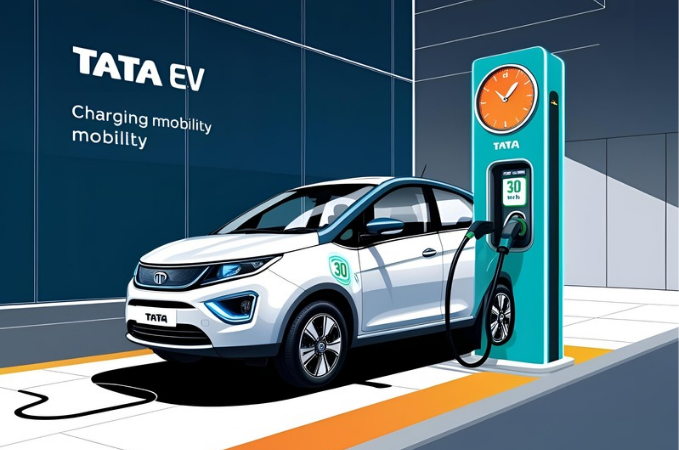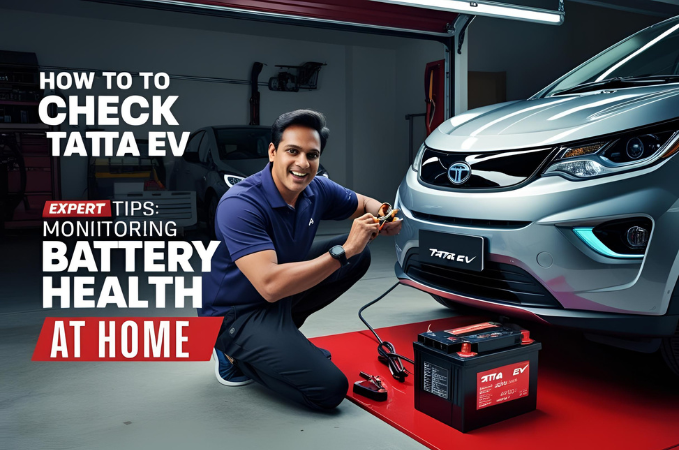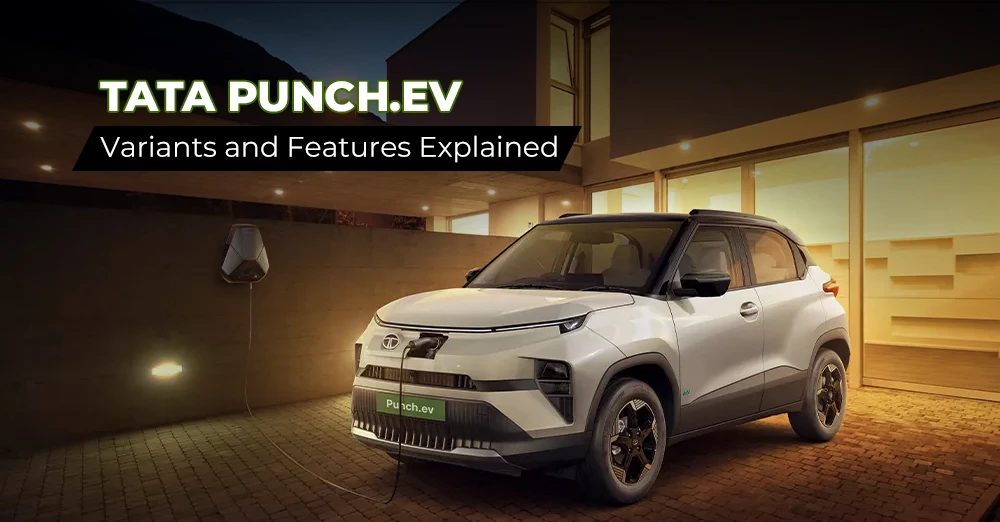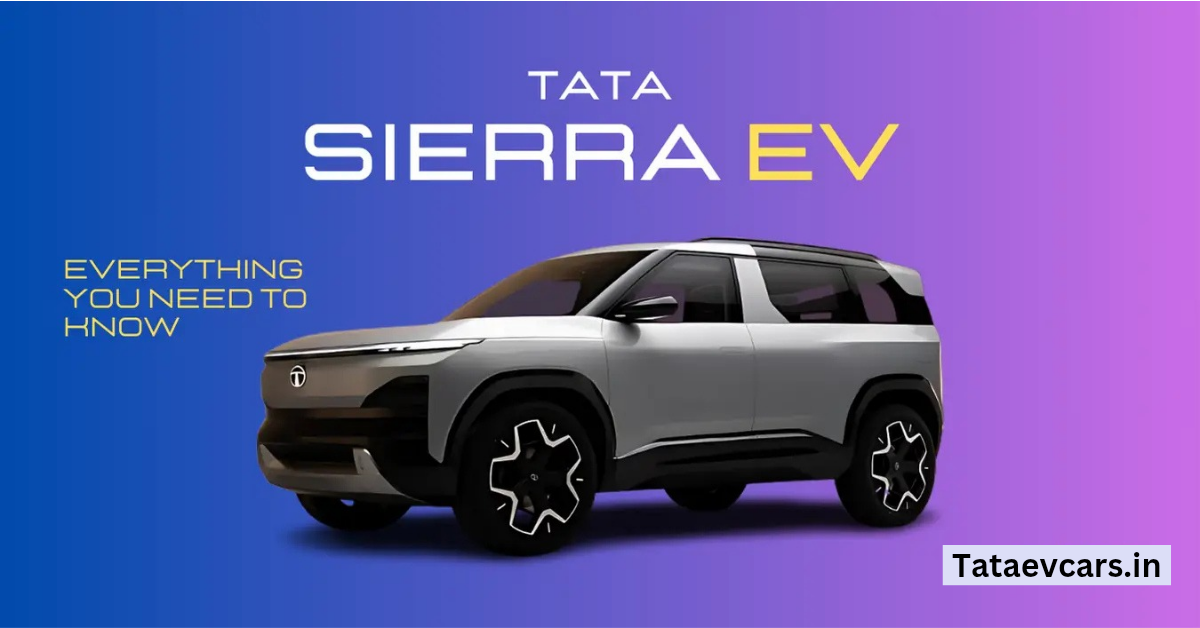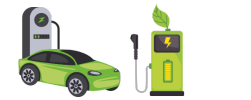Charge a Tata EV with a 15A Socket at home seems like a simple and convenient option, but is it really the best choice? Imagine coming home after a long drive, plugging your Tata Nexon EV into a regular 15A socket, and expecting a full charge by morning. However, when you wake up, you realize the battery is still not fully charged. This can be frustrating, especially if you need your car ready for the day.
In this blog, we will answer some important questions:
✅ Can you safely charge your Tata EV using a 15A socket?
✅ How long does it take to charge different Tata EV models?
✅ What do experts and real users say about using a 15A socket for charging?
Let’s explore the best way to charge your Tata EV at home and whether a 15A socket is the right choice for you.
If you’re curious about quicker alternatives to home charging, especially for those who don’t want to wait overnight, here’s a detailed comparison of Tata EVs with the fastest 30-minute charging times.
Tata EV Charging Basics: How Does It Work?
To charge a Tata EV with a 15A socket, you first need to understand how EV charging works. Tata EVs, like the Nexon EV, Tiago EV, and Tigor EV, support two main types of charging: AC slow charging and DC fast charging.
- AC slow charging is what you get from a 15A socket at home. It provides a lower power output (2-3 kW), meaning it takes longer to fully charge your car.
- DC fast charging, available at public charging stations, can charge your EV much faster (up to 50 kW), reducing the wait time significantly.
Now, let’s compare a 15A socket vs. a dedicated home charger to see which one works best for regular use.
Knowing how much range you’ll get from an overnight charge is crucial. Check out this in-depth battery and range test of the 2025 Tata Punch EV to see if it fits your daily needs.
| Feature | 15A Socket (Regular Plug) | Wallbox Home Charger | DC Fast Charger |
|---|---|---|---|
| Charging Speed | Slow (2-3 kW) | Faster (3.3-7.2 kW) | Ultra-fast (25-50 kW) |
| Full Charge Time | 9-14 Hours | 4-5 Hours | 1 Hour |
| Installation Cost | None | ₹20,000-₹50,000 | Not for home use |
| Safety & Reliability | Moderate | High | High |
✅ A 15A socket can charge a Tata EV, but is it the most efficient choice? Let’s find out!
Can You Charge a Tata EV with a 15A Socket? (Real-World Experience)
Yes, you can charge a Tata EV with a 15A socket, but there are a few limitations. A standard 15A socket provides only 2-3 kW power, which means it takes significantly longer to fully charge your Tata Nexon EV, Tiago EV, or Tigor EV compared to a fast charger.
If you’re considering waiting for a more premium Tata EV with better charging capabilities, the Tata Harrier EV’s expected features and specifications might interest you.
Here’s how long it takes to charge a Tata EV with a 15A socket versus a fast charger:
| Tata EV Model | Battery Size | 15A Socket Charging Time | Fast Charger Time |
|---|---|---|---|
| Nexon EV Prime | 30.2 kWh | 12-14 hours | 1 hour (DC) |
| Tiago EV | 24 kWh | 9-10 hours | 58 mins (DC) |
| Tigor EV | 26 kWh | 10-12 hours | 65 mins (DC) |
As you can see, charging a Tata EV with a 15A socket is possible, but it is much slower than using a dedicated EV charger. If you drive short distances and charge overnight, a 15A socket may be enough, but for frequent long drives, a faster charger is a better option.
Real User Experience:
🚗 Rajesh, a Tata Nexon EV owner, shared his experience:
“I use a 15A socket at home to charge my Tata Nexon EV. It works fine for overnight charging, but during winter, the charging speed slows down, and sometimes the battery doesn’t get fully charged by morning.”
This shows that while you can charge a Tata EV with a 15A socket, it has its drawbacks, especially in cold weather or when you need a quick top-up.
📌 Bottom Line: A 15A socket can charge a Tata EV, but it’s not the fastest or most efficient option. If you want faster, safer, and more reliable charging, investing in a home charger is a smarter choice.

Many Tata EV owners use a 15A socket for home charging, but their experiences vary based on driving habits, weather conditions, and the quality of their home wiring. Here are some real experiences shared by Tata Nexon EV, Tiago EV, and Tigor EV owners.
1️⃣ Arvind, Tata Nexon EV Owner (Daily Commuter – 50 km per day)
“I have been using a 15A socket to charge my Nexon EV for over a year. It works fine if I charge overnight, but sometimes, if there’s a power cut or voltage fluctuation, charging slows down. I noticed that in summer, my car charges faster, but in winter, it takes longer. On some cold mornings, I have found my battery at only 80% even after 10 hours of charging.”
✅ Verdict: Good for regular home use, but unreliable in fluctuating power conditions.
2️⃣ Ramesh, Tiago EV Owner (Weekend User – 200 km per week)
“I mostly use my Tiago EV for weekend trips, so I don’t need to charge it daily. A 15A socket works fine for me, but I had to upgrade my home wiring because my old socket used to heat up after 4-5 hours of charging. Now, I make sure to plug it in at night and check in the morning. It usually gives me a full charge in 10 hours.”
✅ Verdict: A 15A socket is a good option for occasional users, but proper wiring is important to avoid overheating.
3️⃣ Sneha, Tigor EV Owner (Long-Distance Commuter – 100 km per day)
“I initially used a 15A socket for my Tigor EV, but it wasn’t practical for my daily travel. If I reached home late and plugged in the car at midnight, it wouldn’t be fully charged by 7 AM when I needed to leave for work. I eventually installed a 3.3 kW home charger, and now my charging time has reduced by almost half. I still use the 15A socket sometimes, but only in emergencies.”
✅ Verdict: A 15A socket is not suitable for long-distance daily commuters. A faster home charger is a better investment.
4️⃣ Akash, Nexon EV Max Owner (Road Trip Enthusiast)
“I love taking long road trips, and I learned the hard way that a 15A socket is not enough for my Nexon EV Max. When I stayed at a friend’s place, I had to charge my car using a regular socket, and after 12 hours, it was only 70% charged. At home, I installed a 7.2 kW charger, which fills up my battery in around 4-5 hours. Now, I always plan my trips around fast-charging stations.”
✅ Verdict: For road trip lovers, relying on a 15A socket is impractical. A faster charger or public fast chargers are better options.
Conclusion: Should You Use a 15A Socket to Charge a Tata EV?
After reading real user experiences, it’s clear that a 15A socket can charge a Tata EV, but the effectiveness depends on individual needs:
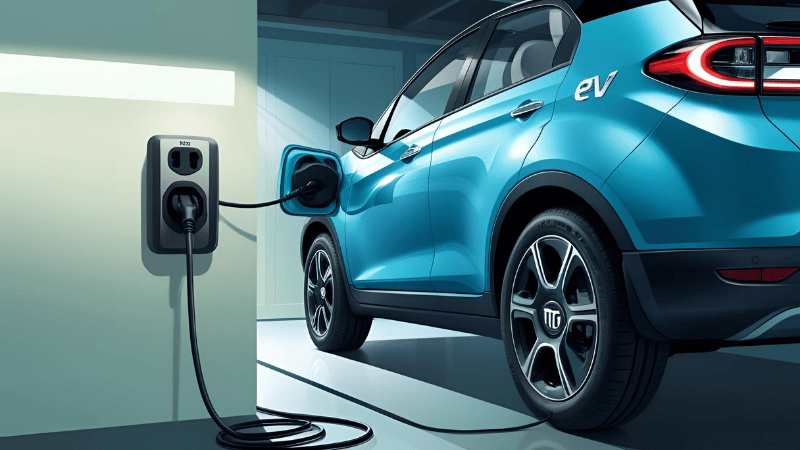
✅ Best for:
- Occasional users who drive short distances (20-50 km per day)
- People who charge overnight and don’t need a quick refill
- Users with stable electricity supply and good home wiring
🛑 Not ideal for:
- Long-distance commuters who need fast, reliable charging daily
- People living in areas with frequent power cuts or voltage fluctuations
- EV owners who travel frequently and need fast top-ups
📌 Final Advice: If you only use your Tata EV for short city trips and have time to charge overnight, a 15A socket is a cost-effective option. However, if you drive long distances or need a faster, more stable charging solution, investing in a dedicated home charger will make your EV experience much smoother.
💬 What’s your experience with charging a Tata EV using a 15A socket? Share your thoughts in the comments below! 🚗⚡
Is Charging with a 15A Socket Safe? (Must-Read Before Plugging In!)
Many people charge a Tata EV with a 15A socket at home, but is it safe? While this method is convenient, it comes with risks that EV owners must be aware of.
Potential Risks & Precautions
🔴 Overheating & Fire Hazards – A low-quality power socket or thin wiring can overheat when supplying power for 10-12 hours straight. In extreme cases, this can cause electrical fires.
⚡ Voltage Fluctuations – If your area has frequent voltage drops or spikes, your EV battery may not charge properly. Over time, this can reduce battery efficiency and lifespan.
🔌 Loose or Old Wiring – If your home wiring is outdated, it might not be able to handle the continuous high load required to charge a Tata EV with a 15A socket.
Safety Tips Before Using a 15A Socket
✅ Use a high-quality power cable and socket – Ensure your socket is properly grounded and can handle a long charging session without overheating.
✅ Check home wiring capacity – The circuit should be able to handle a continuous 2-3 kW load for several hours. If unsure, consult an electrician.
✅ Avoid extension cords – Always plug your charger directly into the wall socket. Using an extension cord can lead to overheating and voltage drops.
✅ Monitor the temperature – If the plug or socket feels hot, stop charging immediately and let it cool down before restarting.
📌 Want a stress-free charging experience? Upgrading to a dedicated EV charger is the safest option!
Expert Insights: What’s the Best Way to Charge a Tata EV at Home?
EV experts recommend choosing the right charging method based on your daily driving habits.
🚗 If you drive daily → A dedicated 3.3 kW or 7.2 kW wall charger is the best choice. It charges your Tata EV faster and ensures safe, stable power delivery.
🛑 If you drive occasionally → You can charge a Tata EV with a 15A socket, but expect slow charging times and possible voltage issues.
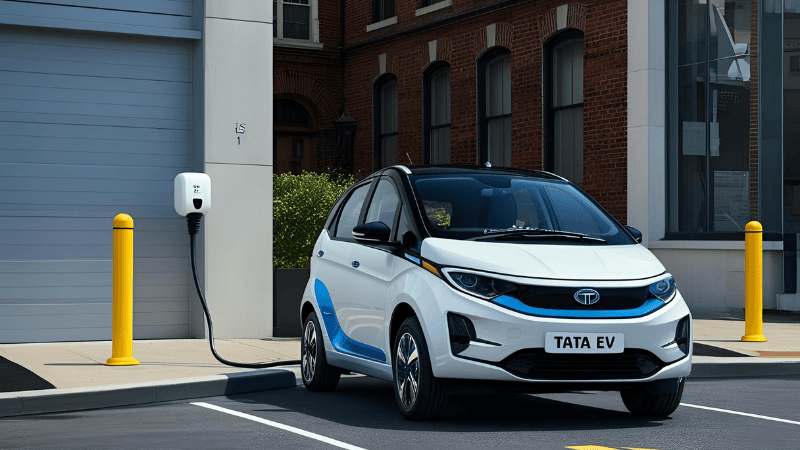
Cost of Installing a Home EV Charger
| Charger Type | Installation Cost (₹) | Charging Speed |
|---|---|---|
| 15A Socket (Existing) | ₹0 | 2-3 kW (Slow) |
| 3.3 kW Home Charger | ₹20,000 – ₹30,000 | 3.3 kW (Moderate) |
| 7.2 kW Home Charger | ₹40,000 – ₹50,000 | 7.2 kW (Fast) |
📌 Pro Tip: Many states offer subsidies on home EV charger installations. Check your local government policies to save on costs!
Conclusion: Should You Rely on a 15A Socket for Tata EV Charging?
Yes, you can charge a Tata EV with a 15A socket, but it comes with limitations.
✅ A 15A socket works, but…
- Charging is slow – Expect 9-14 hours for a full charge.
- Home wiring may not support long charging sessions – Risk of overheating and power fluctuations.
- Not ideal for long-distance daily drivers – A home charger is a better option.
- Best for emergency or occasional use – If you don’t drive daily, a 15A socket can be an affordable solution.
🚀 Best Alternative? A dedicated EV charger provides faster, safer, and more efficient charging for Tata Nexon EV, Tiago EV, and Tigor EV owners.
💡 Still unsure? Drop a comment below and share your Tata EV charging experience! ⚡🚗
FAQs (Answering Common Questions)
If you’re planning to charge a Tata EV with a 15A socket, you might have several questions. Here are answers to the most frequently asked ones to help you make an informed decision.
❓ How long does it take to charge a Tata Nexon EV with a 15A socket?
✔ If you charge a Tata EV with a 15A socket, it usually takes 12-14 hours for a full charge, depending on the battery size. This method works for overnight charging, but it’s much slower compared to a dedicated EV home charger.
❓ Is it safe to charge a Tata EV with a regular home plug overnight?
✔ Yes, you can charge a Tata EV with a 15A socket overnight, but safety precautions are necessary. Ensure your home wiring is strong enough to handle continuous charging. Use a high-quality socket, avoid loose connections, and check for overheating during long charging sessions.
❓ Can I install a fast EV charger at home?
✔ Yes! If you find charging a Tata EV with a 15A socket too slow, you can install a 3.3 kW or 7.2 kW EV home charger. These chargers significantly reduce charging time, making them a better option for daily users.
❓ Will using a 15A socket reduce battery life?
✔ No, charging a Tata EV with a 15A socket does not directly reduce battery life. However, voltage fluctuations and unstable power supply can affect battery health over time. If your area has frequent power cuts, consider using a voltage stabilizer or upgrading to a dedicated home charger.
📌 Final Thought: You can charge a Tata EV with a 15A socket, but for better efficiency, safety, and convenience, a dedicated home charger is the ideal choice. 🚗⚡

